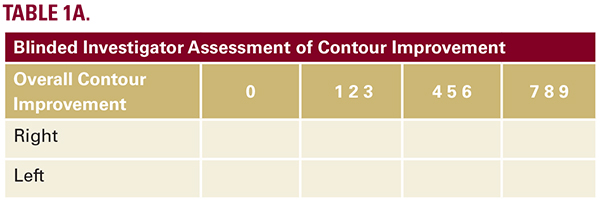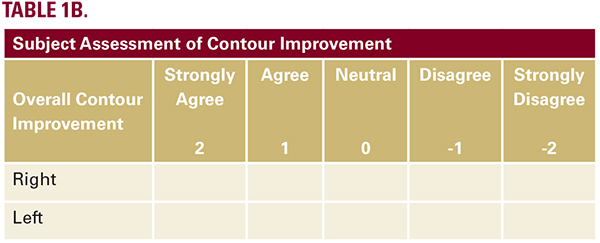Treatment involved cryolipolysis of the upper arms using the CoolSculpting System (Allergan, Irvine, CA). Each subject received two -110C, 35-minute cooling cycles to each arm delivered using the COOLPETITE Advantage™ cups. The cups were placed in two separate positions on each posterior arm (4x35-minute sessions). Immediately following treatment on each arm, a timed three-minute manual massage was performed.The topical products were provided in a double-blind fashion with tubes labeled A and B.Treatment assignment was blinded, arm assignment was randomized. Subjects were instructed to apply one full pump eachof Product A to the right upper arm and Product B to the left upper arm twice daily for the entire study duration. This was applied after bathing or showering without manual massage and the area allowed to dry without the use of any dressing or wrapping. The trial was funded by Alastin Skincare Inc., Carlsbad, CA.Photographic assessments with standardized photography were performed at all visits capturing multiple anterior, posterior (horizontal plane /90 degrees) views in strict standardized positions using Canfield Mirror Software (Canfield Scientific, Parsippany, NJ). In addition, the blinded investigator assessed contour improvement and skin laxity at all visits. Assessments in contour improvement were initially performed by reviewing baseline photos compared to the follow-up visit photos. Canfield objective analysis was subsequently performed as evaluation of photographs was deemed to be too subjective in nature. The Canfield analysis involves a process where 2D images are converted into a 3D space. Landmarks are placed at the top and bottom of the arm and linear distance measurements are then taken from landmark 1 to landmark 2. The same landmark placement at follow up is determined and landmarks 1 to 2 are placed and measured. The delta between baseline measurement and follow up measurement is then calculated. The baseline served as control for each case and changes were assessed comparing baseline with 8-week, 12-week, or 24-week appearances and then comparing these deltas on each side.In addition, subjects were asked to assess improvement in the shape of their arm at all visits.
RESULTS
Investigator and Subject Contour Assessments Blinded Investigators recorded the level of improvement by comparing the photos from baseline to follow-up visits. Grades were assigned according to degree of change (none, small, moderate, significant) and within the latter three ranges, these were further subdivided into 3 levels (Table 1A).Subjects completed the assessment (Table 1B) by comparing their baseline photo to the appearance of their right and left arms at all follow-up visits. Numerical scores were assigned according to category.











